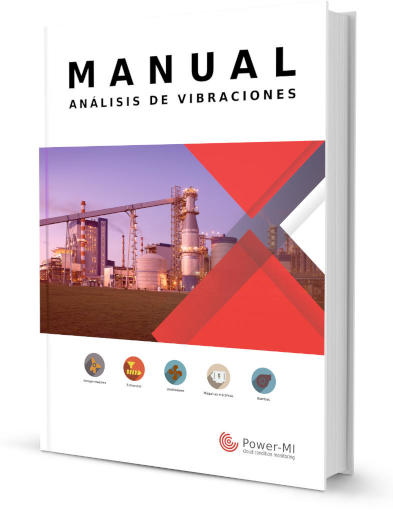Introduction
All frequencies seen so far are called forced frequencies and share the characteristic of being self-excited. When a machine is started, the forced frequencies appear; When it is turned off, the forced frequencies disappear. In fact, if the machine varies its speed, the forced frequencies change proportionally. The forced frequencies often present the property of being easily calculable knowing the physical characteristics of the machine, since these are product of the design and the manufacture of the machine.
The natural or resonant frequency of a system is that frequency that has a tendency or facility to vibrate. Every system has one or more natural frequencies so that when it is excited there will be a significant increase in vibration. The formula of the natural frequency is:
`sf "F"_sf "n" = sf "1" / (sf "2" pi) sqrt(sf "K" / sf "m") `
being m the mass and K the rigidity. From this formula it follows that if the rigidity increases, the natural frequency will also increase, and if the mass increases, the natural frequency will decrease.
Resonance is a state of operation in which an excitation frequency is close to one natural frequency of the machine structure. When resonance occurs, the resulting vibration levels can be very high and can cause damage very quickly.
A typical example of resonance is the opera singer who breaks a glass by giving a sharp note. Although the vessel is apparently not vibrating, it is subject to a tiny vibration whose frequency coincides with its natural frequency. When the wave, in this case sonorous, strikes the body, a vibration of enormous amplitude is generated and the system goes into resonance until it breaks.
When analyzing the problems of vibration of a machine it is important to be able to determine the natural frequencies of the system, since, it is necessary to make sure that there are no forced frequencies near the natural frequencies.
Types of resonance
When performing a resonance classification we will distinguish two types:
- Structural resonance: It is associated with the non-rotating parts of the machine (base plates, structures, pipes, etc.). This resonance can be excited by frequencies associated with rotating elements of the machinery or external elements. External excitation frequencies can be transmitted through pipelines, building structures, foundations, etc.
- Rotor resonance: It is associated to the natural frequency of the rotors of a machine. These natural or resonant frequencies of a rotor are called critical velocities. When the speed of a rotating element approaches its critical speed, a significant increase of the vibration levels occurs, whereas if the machine moves away from its critical speed a decrease of the vibration takes place. This phenomenon is very common in Turbomachines (usually having one or more critical speeds below the nominal speed), during run-ups and run-downs when accelerating or decelerating through one or several resonance frequencies. Sometimes it may happen that the critical speed is very close or coincident with the nominal speed, causing a considerable amplification of vibration. This phenomenon is called "Harmonic resonance".

 cloud_download
cloud_download